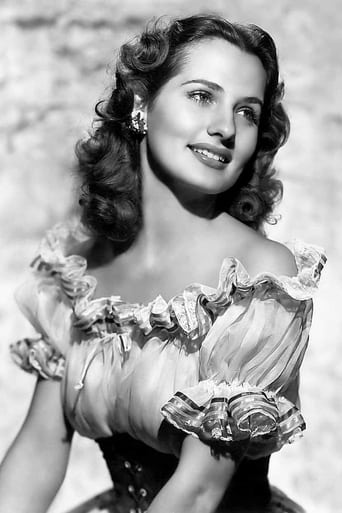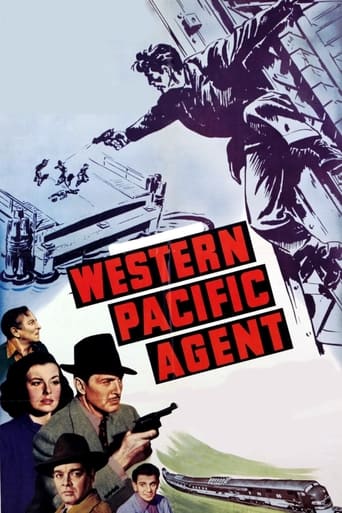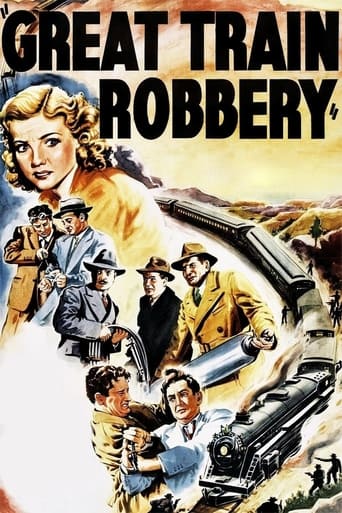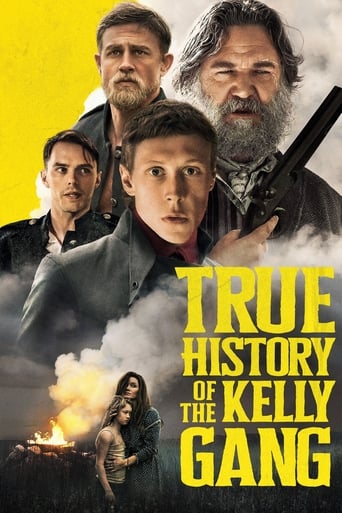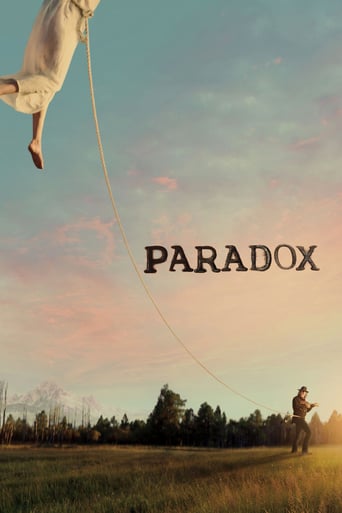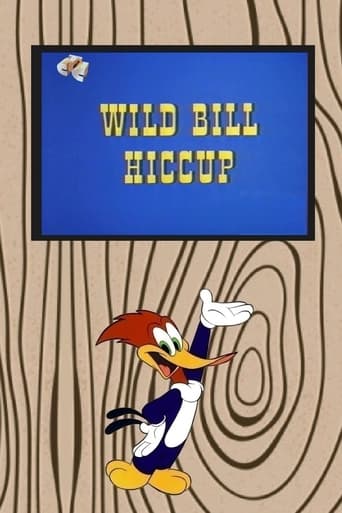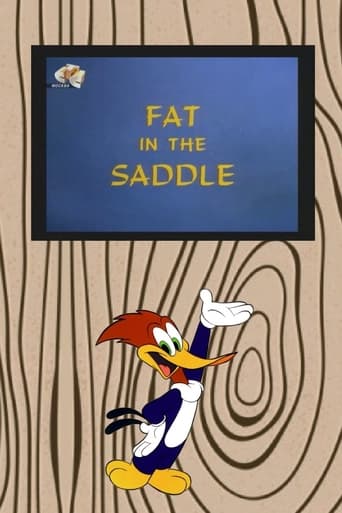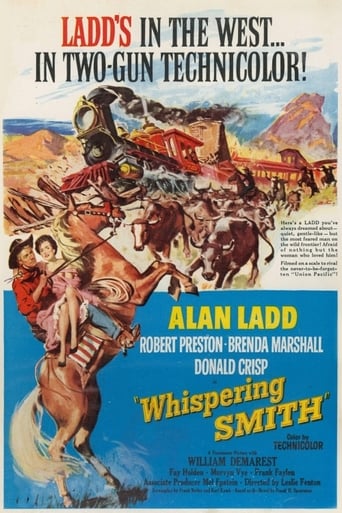
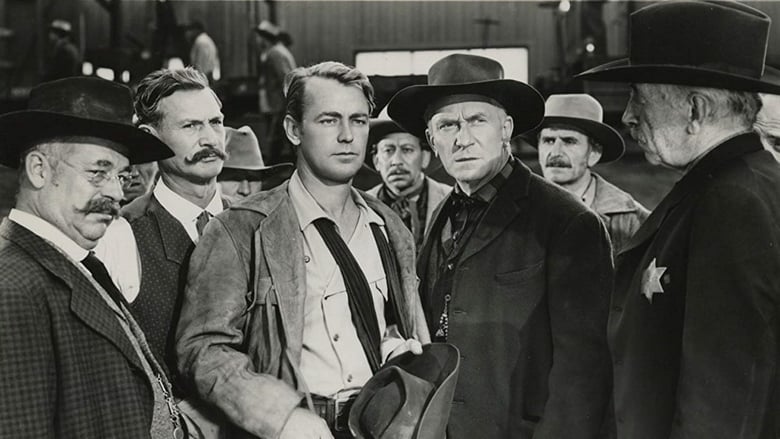
Whispering Smith (1948)
Smith is an iron-willed railroad detective. When his friend Murray is fired from the railroad and begins helping Rebstock wreck trains, Smith must go after him. He also seems to have an interest in Murray's wife (and vice versa).
Watch Trailer
Cast


Similar titles
Reviews
Great Film overall
I cannot think of one single thing that I would change about this film. The acting is incomparable, the directing deft, and the writing poignantly brilliant.
This is one of the few movies I've ever seen where the whole audience broke into spontaneous, loud applause a third of the way in.
Actress is magnificent and exudes a hypnotic screen presence in this affecting drama.
Copyright 18 February 1949 by Paramount Pictures, Inc. U.S. release: 9 December 1948. New York opening at the Paramount: 14 February 1949. U.K. release: 4 April 1949. 88 minutes. COMMENT: Third re-make of Frank Hamilton Spearman's 1906 novel about a railroad detective has a considerable cult reputation that in my opinion is not wholly deserved. For one thing, I'm not altogether happy with Alan Ladd as Whispering Smith. H.B. Warner in George Melford's 1926 version sounds much more like Spearman's charismatic hero. Nonetheless, the studio has not spared the cash and this version is certainly a colorful period piece and it has been handsomely represented on Universal's DVD. If Ladd is not quite the "Whispering Smith" of the villains' nightmares, the rest of the players are ideally cast. Full marks to Preston and Crisp, but even the smallest bits are just perfect.
Don't we all love trains? Railroads as a crucial element in the settlement of the West and the general prosperity of 19th century America seldom get their due in the western movie genre. Whispering Smith, a beautifully crafted 1948 Technicolor Allan Ladd vehicle, fills the gap nicely. Almost every character in this handsome horse opera -- or should I say "locomotive opera" -- makes his scratch either by working for the railroad or robbing it. The town saloon is called "The Roundhouse" and features a mural of a train coming. When soft-spoken, straight-shooting railroad detective Smith (Ladd) goes after the bad guys, he and the posse take a train with their horses riding penned flat cars.Frank H. Spearman's long, complex 1916 novel, which yours truly read as a youngster 50-some years ago, has been distilled down by the Frank Butler/Karl Kamb screenplay to concentrate on a love triangle of Smith, his good friend Murray (Robert Preston), and Murray's wife Marian (Brenda Marshall) who is Smith's lost love. Murray is a heel who doesn't deserve the pretty, gentle Marian. Even worse, when he gets fired from his job as foreman of the railroad wrecking crew, he becomes deeply and inextricably involved with a gang of rustlers, train robbers, and general baddies. Though Smith is very proper and stand-offish with Marian, it's obvious he still loves her. But she poorly hides her love for Smith, fueling Murray's volatile temper and wanton disposition with jealously.While there is plenty of action, Whispering Smith, like most of the better westerns, concentrates on character development, period color, and cinematography. Ladd, though known as a stone-face, was very expressive with his soulful eyes. He plays the stern, upright, and fearless, but friendly, kind, and loyal Smith to perfection. Preston, always fun to watch, essentially reprises his boisterous, happy-go-lucky good guy gone bad character from the even bigger and better train picture Union Pacific (1939). Brenda Marshall plays her tormented role with sensitivity, never forgetting that she is portraying a Victorian lady. In fact one of the charms of this movie is that little of the time period (1940's) in which it was made creeps in to spoil the late 19th century atmosphere. Thanks to the script and Leslie Fenton's expert direction, supporting and even minor characters show robust personalities. William Demarest as Smith's friend and the wrecking crew straw boss is allowed to play it straight, instead of hamming it up as he so often did, and he comes off very nicely. Donald Crisp, seldom a villain in the sound era, is colorful and dastardly as the smarmy, ruthless leader of the outlaw band. Frank Faylen gives a chilling performance as Crisp's main henchman Whitey, an evil, weird-looking albino. Kudos also to Fay Holden as Demarest's boarding house proprietress wife, who sings a duet on the porch with Ladd in a charming scene of 19th century Americana.The splendid three-strip Technicolor cinematography is provided by Ray Rennahan, who put on film a number of grander Technicolor oaters, such as the exotic Duel In The Sun (1946) and California (1946) (see my review), as well as another very interesting railroad epic The Denver And Rio Grand (1952) (see my review). He no doubt got much good advice, wanted or not. from the Technicolor Corporation's top adviser Natalie Kalmus. She had a reputation for intruding herself into set decoration and costuming, but she usually knew what she was doing. In Whispering Smith it seems everyone's revolver is a nickle-plated one, and the same can be seen in many of Natalie's Westerns. No doubt she thought the nickeled pistols looked prettier in Technicolor than the blue ones! Sets and decorations in this picture, provided by Sam Comer/Betram Granger, and costumes by Mary Kay Dodson are superb. My wife, who claims to know about such things, says the women's dresses were perfectly accurate to the time period.Editing was silky smooth as in most 'forties productions. All-important pacing was perfect. The story moved fast, but took plenty of breathers for color, character development, and tension building. Credit Fenton and editor Archie Marshek. My only complaint, and it is a minor one, is that Adolph Deutsch's score was perhaps slightly too pat and restrained. It was good, but could have been better. Western movies practically demand grand, operatic scores like those of Steiner and Tiompkin. They should be horse operas literally as well as figuratively!Colorful, authentic, thrilling, and dramatically absorbing, Whispering Smith is a top-notch, adult, "A" western, an under-appreciated classic from Hollywood's Golden Era.
This was an awfully mediocre Western even though it featured Alan Ladd and Robert Preston--two actors capable of much better films than this. This isn't to say it's bad--just very ordinary and only a time-passer.Ladd is a special agent that works for the railroad. He comes in town to round up a trio of brothers who have been robbing trains. He makes pretty short work of these three in only the first 10 minutes or so of the film and the focus then is on his renewing an old friendship with Preston--a guy who also works for the railroad and a guy who married the woman who was stuck on Ladd years earlier. Well, the two friends are as happy as two clams, though the fact that Preston is a bit crooked it telegraphed so that everyone in the audience and all the other actors seem to know it long before Ladd. Either Ladd is really dumb or blinded by loyalty. However, as the film progresses, this friendship is in tatters and the inevitable confrontation between them eventually occurs and the movie ends. All this looks like something I've seen before several times and it's too bad the stars weren't given better material, as nothing seemed to occur that wasn't expected.
This is a standard actioner about railroad detective Luke Smith (Alan Ladd) who has to track down an old buddy Murray Sinclair (Robert Preston) whom he believes is involved in a series of railroad hold ups. Murray also happens to have a fine spread and is married to Smith's old love interest, Marion (Brenda Marshall).Smith cut's Murray a lot of breaks and gives him the benefit of the doubt until someone is killed in a railroad hold-up and he can no longer turn a blind eye towards his old friend. Donald Crisp plays the leader the gang that led Murray astray and we have bad guy Whitey (Frank Faylen wearing a blond wig) as the heavy. Paramount gave it an "A" picture look with excellent Technicolor production values, but it deserves a better plot. Preston merely repeats his good-guy-gone-bad role from BLOOD ON THE MOON, and Ladd is capable but low-key to the point of almost being monotonous. Crisp as a bad guy makes no impression while Faylen's blond wig, looks ridiculous.It starts off being filmed up in the beautiful Sierras but winds up towards the end at the same ranch locations that Paramount used for most of it's programmers. Same old locations.It's not bad, but it's nothing special, imo. Average.5 out of 10




